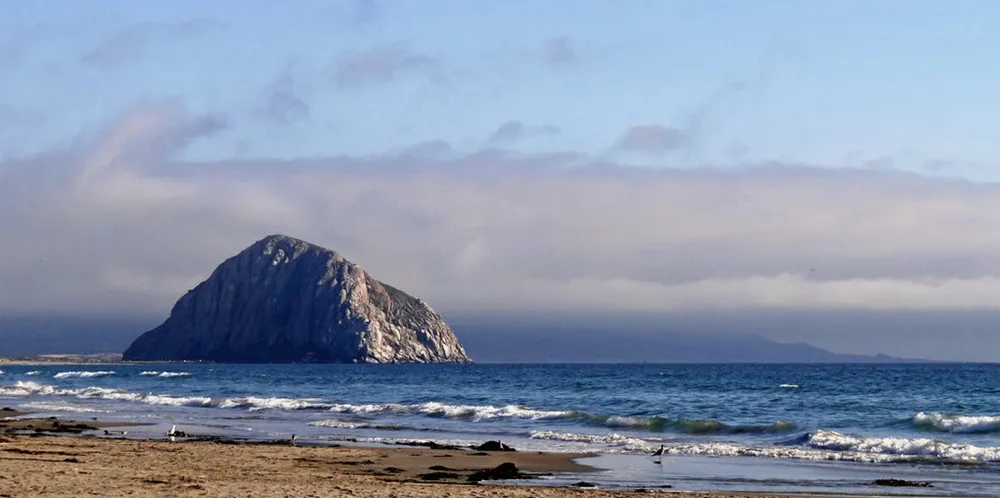California offshore wind believers put faith in Biden pushing button on first lease sale in 2021
State's long-brewing ambitions to jump-start industry with lead-off 3-5GW of capacity have been stymied to-date by US Navy activities in Pacific Ocean

California’s aspiring offshore wind sector is optimistic that President-elect Joe Biden’s incoming administration will resolve ocean use conflicts with the Pentagon to clear the way for long-awaited commercial lease auctions along the state’s central and north coasts.
Green is the new black. Subscribe to Accelerate
Get the market insight you need into the global oil & gas industry's energy transition – from the new newsletter from Upstream and Recharge. Sign up here
Reicher told a recent webinar that Biden as a US senator from Delaware was among the first lawmakers in Congress to support the 200MW Bluewater Wind project 15 years ago off the coast of his home state of Delaware. The project, among the earliest in the US, did not get built. Orsted is now advancing the unrelated 10-turbine Skipjack array there.
During his election campaign, Biden promised to turbocharge clean energy development including installation of “thousands of turbines” offshore during his first term. Such a move, he said, would help set the US on a path to meet ambitious climate goals his administration will set.
With US developers adopting 12MW or larger turbines as the industry standard here, 1,000 turbines would signify 12GW of new offshore wind capacity coming online over four years.
Offshore wind proponents in California also anticipate support in the White House from native daughter Kamala Harris – now a US senator - who will become the nation’s first female vice president when she is sworn into office with Biden on 20 January.
There is also a strong possibility that Biden will select California public officials and/or scientists to head the US Department of Energy and Environmental Protection Agency which could further benefit offshore wind activity in the state.
Lastly, California governor Gavin Newsome, who is expected to run for reelection in 2022 and, like Harris, has presidential ambitions, views offshore wind as playing a potential important role in helping California decarbonise its grid by 2045. After Texas, it is the second largest state electric power market in the US.
With state and future national policymakers seemingly on the same page, their immediate challenge with Biden as president is deciding where commercial offshore development will take place. Unlike most of the US east coast, California’s outer continental shelf quickly drops off to deep waters that will require use of floating platform technology.
This, and a public consensus that the state’s iconic Pacific Ocean views must be preserved, will require anchorage far from shore where turbines could potentially interfere with US military activities, according to the Department of Defence (DoD).
There are 32 military bases in California with the Navy having the biggest presence. The US Third Fleet, which plans and executes naval operations in the Pacific Ocean and operates off the state’s coast, has a massive base in San Diego.
The Bureau of Ocean Energy Management (BOEM), the federal industry regulator, several years ago proposed three “call areas” for development at scale.
DoD, however, considers only a sliver of the central coast zones suitable for offshore wind, mainly Morro Bay, and prefers that turbines be installed closer to shore – something the industry and state generally oppose.
For the last 19 months, BOEM has led federal efforts and worked alongside state agencies and local legislative leaders in discussions with DoD to find area along the central coast that could support 3-5GW of capacity necessary to jump-start the industry there.
“I see some progress slowly but surely being made. I believe the impetus will increase with President Biden and with Vice President Harris,” said Dennis McGinn, a retired vice admiral, former Third Fleet commander and naval aviator who knows California’s Pacific waters well.
No ‘zero sum game’
McGinn, now with the non-partisan Center for Climate and Security in Washington, DC, rejected the notion that there is a “zero sum game” at play where the choice is between national defence and California offshore wind.
“It is possible to have compatibility between DoD training and testing operations off the coast of California and viable, economically productive offshore wind,” he told the conference held by industry group Offshore Wind California. “I am absolutely convinced … this is doable.”
McGinn noted that development of wind farms at sea is already happening across the Pacific. “It will be the environment where our armed forces will be operating for many, many decades to come,” he said.
There are economic and grid operational benefits that an initial 10GW offshore wind capacity could provide California, not least in an era of climate change that helped stoke the most destructive wildfires in the state’s history this year.
He noted that California is committed to transitioning away from fossil fuels and to closing the 2.25GW Diablo Canyon nuclear power plant in 2025, the last one in operation.
“There is a sense of urgency,” he said with offshore wind development. “Let’s get this thing going. Permitting and lease sales. Steel in water,” said McGinn. “Climate change and Mother Nature not going to go away soon.”
(Copyright)